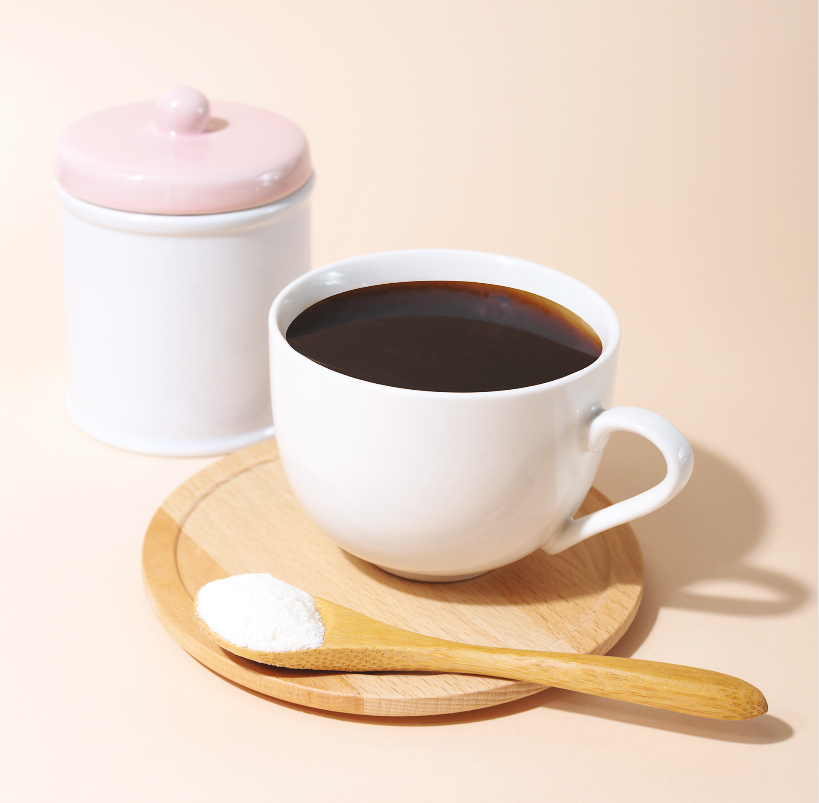Preservatives, as the name suggests, preserve a product and ensure its safety and quality of use for a duration of time. As it is usually microbes such as bacteria and fungi that cause the rapid deterioration of a product, preservatives are compounds with anti-microbial properties that inhibit nasties from growing.
Microbes, as a general, need water and a food source for survival. The Goldilocks conditions for life are present in abundance in practically all bathrooms. Just think of a rich, creamy face moisturiser that’s made chock full of oils and butters (yummy food for microbes): paradise for mould and bacteria! Preservatives may seem daunting but trust us – the stuff that could grow without preservatives to fight them can be far, far worse.
Despite this, there is a lot of fearmongering around the use of preservatives. Is it valid? Should preservatives truly be feared? Well, yes and no; but really, this comes down to the type and quantity of preservative used.
We won't lie - preservatives can be nasty. Many of them, such as formaldehyde donors and benzoates, have high irritant and allergen potentials when used in high concentrations. However, the amount of preservative which consumers are exposed to from typical use of a cosmetic product is strictly regulated, and the risk of exposure to dangerous levels of the preservatives from their use is next to none.
We've said it before, and we'll say it again: the dose makes the poison. Too much of almost anything is dangerous, and the same is true for preservatives. 
What are some common preservatives?
Common preservatives in cosmetic products are compounds such as aldehydes, glycol ethers, isothialinones, and organic acids. These are often listed as ingredients such as diazolidinyl urea, phenoxyethanol, and methylisothiazolinone. There are also the controversial parabens such as methylparaben ad isobutylparaben, which have lost popularity over the years.
Parabens have been used as preservatives since as early as the 1930’s and were popular for good reason. They’re very effective at combatting fungi and bacteria, are generally stable compounds that play nicely in most formulations, and they have a low allergy potential in comparison to other preservatives such as formaldehyde-donors. However, parabens have developed a bad reputation, and “paraben-free” claims have become commonplace on most product labels these days.
But why? Parabens are a red flag for consumers for fear of being endocrine disruptors that are linked to breast cancer as some studies have shown them to be weakly oestrogenic. However, the studies which received the most media attention that led to the demonisation of parabens had significant flaws. For one, the studies were either conducted in vitro on rats (where the tested parabens where injected under the skin of the animals – something that would not occur with human cosmetic applications) or highlighted the presence of parabens in cancerous human tissue without making any comparisons to healthy tissue to prove a correlation between parabens being the cause of cancer. Moreover, these tests were not reflective of the quantities that parabens would be present in most cosmetic and ingested applications.
In fact, peer-reviewed criticism of the latter study resulted in the authors publishing a note that their study made no claim that the presence of parabens had caused breast cancer and relayed that a measurement of a compound in cancerous tissue without comparisons to healthy ones was not sufficient to suggest causality.
At present, there is no concrete, scientifically-backed evidence that parabens cause negative health effects in humans (apart from allergenic responses in certain individuals – but so does the humble peanut!). 
If parabens are safe, why do we avoid them?
Because we can. Until the general fear of parabens subsides, being paraben-free is important to our customers and, by extension, us. And we get it – it’s difficult to know what is and isn’t safe for use these days, and it’s arguably even more difficult knowing what can and can’t be trusted.
What preservatives are used in some Ethique products?
There are other preservatives out there that align with our ingredient-selection criteria. Instead of parabens or formaldehyde-donors, we use an ECOCERT and COSMOS-approved blend of benzyl alcohol and dehydroacetic acid. In the safe, effective quantities of this preservative we use, it is a potent anti-fungal and anti-microbial preservative with a low allergen potential that helps keep our bars safe for use for the duration of their time on your shelves and homes. We are also experimenting with other preservatives: gluconolactone and sodium benzoate, which are also compliant with the certifiers and meet our selection criteria of being safe for both people and the planet.
Dehydroacetic acid is readily biodegradable, and produced to the highest feasible sustainability practices to comply with ECOCERT and COSMOS regulations. Benzyl alcohol is too and is a naturally occurring compound in many fruits and plants such as jasmine and ylang ylang. Benzyl alcohol has a light floral scent, that turns into an almond scent note when oxidised in products. Because we use such a small quantity of preservative in our products, this scent is usually undetectable – but some of our customers with sensitive noses pick it up very subtly in our unscented products as there are no essential oils or fragrances to mask the aroma.
We are also experimenting with different preservatives, including a blend of gluconolactone (a naturally occurring food additive) and food-grade sodium benzoate. 
Why do some products contain preservatives, when others don’t?
In short: because some need them, and others don’t.
Because most of our bars contain little to no free water, they don’t require a preservative to remain free of the nasties (No water = no life; the Goldilocks conditions, remember?) This is also why we emphasize how important it is to keep your bars dry – not only does it increase longevity of your bar by keeping it nice and firm, it also means keeping microbes at bay.
Our bars such as shampoos and soap also have their own natural defences against microbes, even without the assistance of an added preservative. Surfactants such as sodium coco sulfate, soap (in our bodywash bars), and sodium cocoyl isethionate damage the cell walls of microbes, killing most bacteria and fungi, and rendering many viruses inert and unable to multiply. pH is another line of defence, particularly for our soap bodywash bars which have a slightly alkaline pH of 9 that is not inhabitable for many microbes.
But what about exposure to water in my shower when I use the bars? Fret not! We like to err on the side of caution, as there are so many factors beyond our control once the bars leave our warehouse. If there is even a small risk that a product could be compromised with regular use and proper storage, we will add a preservative.
Ethique products with added preservatives:
- Some shampoos, cream body cleansers, and face cleansers. These are pH balanced and water-free, but as their formulations are not as resistant to microbial growth as some of our others for a multitude of factors, so we add preservatives for an added layer of protection.
- Conditioners. Despite being waterless and pH balanced, conditioners do not contain surfactants that are effective enough to prevent microbe growth. We preserve them for added protection.
- Face moisturisers, the Perfector and Quench, and Body Cream Sticks. These are emulsions, meaning they contain both water and oils in a blend. These products require preservatives due to the presence of water in the formulation.
Ethique products with no added preservatives:
- Lipsticks, lip balms, deodorants, and body butters. These are waterless formulations designed to be used on dry skin! As oils and water repel each other, the chances of the oil-based bars absorbing water are incredibly low.
- Some shampoos. The activity level of the surfactants present in some formulations is higher than that of others, due to hair type and some other factors. Combined with the lack of free water, we’re confident these do not require additional preservatives with proper storage and our testing proves this to be true.
- Bodywash soap bars (120g). Between the high pH, lack of water, and surfactant activity, bar soap has a long history of stability. In fact, soap that was made decades ago still exists – and still works just fine.

How do we know if the preservatives in our products are effective and safe?
The preservatives we choose are safe, effective, and meet the ECOCERT and COSMOS standards - which consider the raw materials, manufacturing, and packaging of the ingredients to ensure they are not only organic and of natural origin but are also sustainably and responsibly sourced.
To test that the preservatives are effective in the quantities we use, all our products undergo stability and challenge testing in Europe, where they are subject to accelerated heating, cooling, and exposure to a variety of microbes. For them to pass, they need to prove that they do not support microbial growth through a process of inoculation, (where microbes are repeatedly added into the product) and all our products have passed with flying colours to obtain shelf lives of over 36 months.
Additionally, all our products are assessed to meet the European standard of safety, which is the strictest authority of cosmetic safety in the world. As part of this process, the concentrations of all the individual ingredients in our products (including preservatives) are assessed to ensure that they occur in levels that are safe for regular, typical cosmetic use.
These assessments offer us peace of mind that the products are safe to use – from both the microbial nasties as well as the preservatives that fight them.
References
Routledge, Edwin J., Parker, J., Odum, J., Ashby, J., Sumpter, J.P. (1998), Some Alkyl Hydroxy Benzoate Preservatives (Parabens) Are Estrogenic. Toxicology and Applied Pharmacology, Volume 153, Issue 1, 1998, Pages 12-19, ISSN 0041-008X.
https://doi.org/10.1006/taap.1998.8544.
(https://www.sciencedirect.com/science/article/pii/S0041008X98985441)
Darbre, P.D., Aljarrah, A., Miller, W.R., Coldham, N.G., Sauer, M.J. and Pope, G.S. (2004), Concentrations of parabens in human breast tumours. J. Appl. Toxicol., 24: 5-13. https://doi.org/10.1002/jat.958
Harvey, P.W. and Everett, D.J. (2004), Significance of the detection of esters of p-hydroxybenzoic acid (parabens) in human breast tumours. J. Appl. Toxicol., 24: 1-4. https://doi.org/10.1002/jat.957
Sasseville, Denis MD, FRCPC; Alfalah, Maisa MD; Lacroix, Jean-Philip MD “Parabenoia” Debunked, or “Who’s Afraid of Parabens?”, Dermatitis: November/December 2015 - Volume 26 - Issue 6 - p 254-259 doi: 10.1097/DER.0000000000000147
https://journals.lww.com/dermatitis/Abstract/2015/11000/_Parabenoia__Debunked,_or__Who_s_Afraid_of.3.aspx
Golden, Robert & Gandy, Jay & Vollmer, Günter. (2005). A Review of the Endocrine Activity of Parabens and Implications for Potential Risks to Human Health. Critical reviews in toxicology. 35. 435-58. 10.1080/10408440490920104.
https://www.researchgate.net/publication/7663616_A_Review_of_the_Endocrine_Activity_of_Parabens_and_Implications_for_Potential_Risks_to_Human_Health
https://www.theecowell.com/blog/preservatives1
https://labmuffin.com/fact-check-friday-whats-the-deal-with-parabens-in-cosmetics/
https://labmuffin.com/should-you-be-avoiding-parabens-the-science/#more-7530




